Hello, I’m Jane Goodall.
I’ve devoted most of my life to learning about and protecting animals all over the world.
As a child, my dog Rusty was a wonderful companion.
He showed me that animals not only have personalities but minds and feelings as well.
Shelter Me is a series that celebrates that beautiful bond we have with our pets.
In this episode, we visit a shelter where young people read to the animals to help them relax as they wait to be adopted.
It’s asleep.
We follow a high school cross country team as they take their local shelter dogs out for a run – And they want to be outside.
And here at the school we’ve got a group of kids that love running.
– And we feature an organization that train shelter dogs to do lifesaving conservation work in Africa.
– I just think the dogs are so much faster that we’re being able to shut down poaching cells much quicker than we were previously.
– Yeah, – Please enjoy these stories and thank you for caring.
Shelter Me Give me that one second chance I need.
Ohhh, Shelter Me.
And you will have all my love and loyalty.
– The Sacramento County Bradshaw Animal Shelter is an open intake shelter, which means that we take any animal that comes through our doors and that means that we take in 15 to 17,000 animals per year.
The Sacramento County Bradshaw Animal Shelter has a lot of partnerships in the community.
The stamp program, which is the Sacramento Teen and Animal Membership Program is one of those.
It is a volunteer program that is made up of 12 to 18 year olds.
– Amber, are you done?
Go ahead and leave that out.
We’re gonna need it.
We started with seven kids four and a half years ago and yesterday we brought in 71 new teenagers.
They participate in a variety of activities.
A lot of it is grunge work where they do dishes and laundry and squeegeeing floors and restocking.
Is everybody ready?
Okay.
But the program we’re most proud of I think is our pages for pups.
We today are going to spotlight our pages for pups where we read to the dogs and today we’re gonna spotlight the book Before you were mine.
It’s a wonderful story.
It has a huge impact what you do when you read to the animals, so you have magic in your voices.
And today you’re gonna put that magic to work.
So we’re going to have you come up, grab a book and then we’ll send you off in small groups.
I think children are looking for ways to become part of the community to give back and it gives them a chance to participate and be part of a group that’s become like a family.
– I decided to start volunteering at the animal shelter ’cause I really have a passion for working with animals.
Volunteering is like not only great but volunteering with animals.
That’s even better.
– One of our main goals is to really educate these kids about the realities of shelters, the good and the great and the not so great sometimes even because these kids are really gonna be the next generation to change the world of shelters and how we see them.
– So find a kennel, a dog that looks good, they all look good.
– Hello.
The animals, they have a lot of issues when they come into the shelter.
They’re scared.
They’re in a place where they’ve never been before.
They’re not used to the surroundings.
And when we come in and we read to them, they get used to people being around them a lot more.
– Before you were mine, did you live in a warm house with warm smells and a rug that was only yours?
– Did you have a boy who saved you the last bite of his cookie and raced with you at the park?
– Was your boy proud when you learned to trick?
Did he talk about you at recess or laugh when you licked his chin – Before your mind was someone mean to you?
Were you kept on a chain with a dusty bowl and lonely sounds all around?
– Did someone say bad dog even though it wasn’t true?
That book was really sweet.
Like it really showcased what an animal goes through before you adopt it.
Like all the different circumstances it can come through.
So like you can better understand your animal in a way it can help people learn from it.
– Before you were mine, the shelter told us that you had been running for a long time eating whatever you could find, which wasn’t much.
Alone and scared like a dog shouldn’t be.
– Did you sleep in dark alleys?
Did you dream of a boy?
– There you go.
Yeah, good girl.
– It’s okay.
Before you were mine, you were rescued.
They brought you to a place where lots of other dogs waited.
– They gave you a meal and a bath and a bed of your own.
But you weren’t sure – Before you were mine.
Did you live in a warm house?
When we started reading we only read to dogs, but we kind of started to branch out after a little while because there are lots of cats that are frightened or scared when they first come here.
We read to the animals to help them feel more safe.
It’s like magic.
Dunno how to explain it otherwise.
– You huddled in the back of your cage, shivering with your tail, tucked under.
The tag on your cage read “Stray”.
– So maybe it doesn’t matter what happened before you were mine, because now you’re home.
It’s asleep.
It feels really good when a dog’s sitting at the back of its cage and it comes up and it wags its tail.
And just like having the dog go to sleep like that when you’re reading to it, it just feels like really good.
– Before you were mine, someone must have let you go.
Did you sleep in dark alleys?
At first, my dog, he was pretty nervous, but as I continued reading he would come to the front of the cage or lay down on his bed and by the end he was just totally tired and asleep.
– The dogs are very antsy and barky and moving around at the beginning and by the end some of ’em are so relaxed, they’re falling asleep.
And some of the kids fall asleep too.
– She has definitely calmed down a lot.
There’s animals that deserve something better and they deserve a home.
But I want to be able to help as much as I can.
’cause they can’t always just find a home right away.
– It’s cool that we get to help them.
They’re amazing dogs.
They just need someone to warm up to and have a home.
– I feel like we read her a bedtime story.
She was, she was falling asleep while we were reading it to her.
She seems very relaxed and calm.
Especially in the shelters, they have a lot of anxiety and they pace a lot, but she’s just really calm and laying there.
– Hi.
Hi baby.
It calms me down a lot to come in and read to animals.
Like if I’m having a bad week, seeing them relax and feel happy makes me happy.
– Hey guys, are you getting Lulu today?
– You bet!
_Awesome.
Here you go.
– I see so many benefits from the program.
Dogs who were not as adoptable have become more adoptable.
And we see that by them being adopted.
Whereas they may have just languished in the back of a kennel, they’re now walking out the front door with the new family.
– My gosh!
Shelter pets are really the best kind of pets I would think.
All they really need is a second chance.
And when you give them love, they’ll open right up to you and they’ll be just like any other animal and they’ll love you so much.
– She got you!
I love the STAMP program.
I love the effects on the animals.
I love the effects on the kids because they see that they’re making a difference and they become more empathetic.
They become kinder.
It impacts their lives and their feelings and the way they approach the world.
Hi, aww… And it’s just wonderful to see that blossoming.
– Come here baby.
Look.
Look.
Feels good to realize that she’s now warmed up and obviously happy.
Probably gonna go to a good home.
She seems adoptable.
So maybe it doesn’t matter what happened before you were mine because now you’re home.
– So maybe it doesn’t matter what happened before you were mine because now you’re home.
– Good morning.
My name is Stacy Silva and I’m the community outreach coordinator with Santa Barbara County Animal Services here in Santa Maria.
I have the St. Joseph’s cross country team coming in to run with our dogs again.
They’ll be here about 2:30.
Oh, okay.
Thank you.
Being a public access, open admissions shelter, we don’t have control over the flow of animals that’s gonna come in.
And we take in stray animals.
We also get owner surrenders.
Here in Santa Maria, we take in about 3000 animals at this facility alone.
So there are times where our kennels are full and our outreach opportunities are really what helps us to save animals.
So this running partnership that we’ve developed with the St. Joseph’s High School cross country team has helped our ability to get these animals out.
It gives every dog an opportunity to be seen for who they really are.
A dog that just wants to be loved.
– My name is Louis Escobar and I’m the cross country coach here at St. Joseph High School.
Cross country is long distance running and racing and yeah, we’ve got a very good group of kids here.
Back in August, Stacey sent me a text, – Why don’t you bring your kids to the shelter and let’s run with some of these dogs?
– And it sounded like a great idea to me.
Stacey has a group of dogs that are in kennels and they want to be outside.
And here at the school we’ve got a group of kids that love running.
On the way back to the shelter, I took out my phone and I just took a 60 second video of the kids running by.
And that was it.
I put that video on our team Facebook page.
And by midday there was hundreds and hundreds of likes and shares and comments.
The next morning there was thousands and thousands of shares and comments and likes.
The day after that, hundreds of thousands, eventually there was millions and millions of views of this little video and it’s been shared worldwide, – Not just worldwide, but right here in our own community.
Some of them didn’t even realize that the shelter was here.
And now the kids are coming over about twice a month and it’s garnered amazing support.
Do you remember what her story was?
– Well, Princess came in, I believe it was a stray and then we found that she had a family.
They didn’t show up to get her.
And Princess is still here.
She needs a good home.
– She’s gonna go out with Jacob again today.
He’s been coming and running with her since we started in August.
Oh, nice.
– Does anybody have any questions?
Jacob is a sophomore and he’s been on the cross country team for two seasons and he’s one of our top runners.
He’s a good student too.
And the first time that we went to the shelter is, and he met Princess, they hit it off and they’ve run together every time that we’ve gone down there.
– Cool, thanks.
Our dogs are evaluated and if I’m not comfortable with that animal, I’m not gonna let it go out on a run.
It really was about making this a positive experience for not only me and the kids, but also for the dogs.
So this is Sadie.
She is about seven months old.
We think she’s a German shepherd, husky cross, and unfortunately she came to us with a really rough start in life.
Somebody got her as a puppy and they abused her pretty badly.
Our officers had to remove her from that dangerous situation.
She had two broken front legs that required repair, but she’s healed up and she’s been released by the court system to find a new home now and having a variety of people treating her nicely is gonna benefit her as well.
– Claire is also a a junior and she’s been on the cross country team for three seasons and she’s been a big advocate for the shelter dog runs.
Every time we go she’s very excited.
She’s always got a big smile on her face and she’s ready to do it.
– We started running with the dogs in August the first time and we’ve done it maybe four times since.
– Yeah, you’re, you’re really like personalizing the dogs, like humanizing the dogs and making them more approachable.
– This is Balto.
He’s a 2-year-old malamute and he is going on his very first run today.
He was found as a stray and surprisingly enough, this gorgeous dog, nobody came in to claim him.
– Sequoia is a great kid.
Even before we went down there the first time to run with the dogs, she had been volunteering there for a few months.
And so now that the shelter runs have been so successful, she’s really enjoyed it.
She’s gone back.
She’s been inspired to volunteer even more and importantly take some of her teammates down there with her.
– My teammates love running with the dogs.
It’s definitely a highlight.
Whenever we find out we’re gonna go run with the dogs, we’re all so very happy.
So we’re gonna run down to the dog shelter and then we’re gonna get the dogs out of their cages and we’re gonna run around with them for a bit and get them to get all that playful energy out that they kind of keep cooped up when they’re in their cages.
– So this is Fiona, she’s been with us since April.
She came to us as a confiscate as well, a neighbor called that she was left in a backyard when her owners were evicted from their home.
And unfortunately despite attempts to contact them, they, they never came and got her.
Sad story for this poor girl.
But she has thrived here at the shelter and she’s been running with the kids since they started in August.
So we know that she’s excited to get out and go today.
All right guys, another exciting day.
Thank you for being here again.
There are about 15 dogs we have harnessed up and ready to go.
There are a handful of dogs that you guys have met before, but we have a lot of new dogs running today.
Dogs that have never experienced this.
So don’t forget to hold tight on the leash.
Make sure they’re not running in front of you so you don’t get tripped up.
You guys have a big meet tomorrow, so we want everybody to stay safe and thank you again for being here.
I really appreciate it.
Our dogs really appreciate it.
You guys are making a huge difference.
Baby, are you ready to see them?
You ready to get out?
Come on!
All right, so this is Sadie.
She was really badly abused and now she’s gotten clearance to go for her first run today.
Aw, she loves you.
She’s a sweet girl.
– This is Raider.
He’s really, really strong and really, really fast.
We’re gonna run about two miles today.
– She’ll make it ’cause she’s a really energetic dog.
She’ll outlast me.
– You guys ready?
Go for it!
Nobody had to do this.
They wanted to do this.
Hang on to that!
It’s what we do and let’s run with these animals and do something nice.
– This is Princess.
I think this is my fourth time running with her.
A good home for her would definitely be somebody who will actually take her out, run with her, walk her play with her.
– It is a great experience for the dogs and for the community.
These people are thanking the kids for being out here and spending time with the dogs.
It makes me feel really good that we can do what we do, plus we can contribute to the community.
It’s so awesome, right?
I mean it’s just a small easy thing for us to do and it goes such a long way.
So it’s just a beautiful, kind, small little gesture of goodness.
– He definitely tired me out.
I couldn’t keep up.
I know.
We couldn’t keep up.
He was going so fast.
– This is Fiona.
Oh, Fiona.
Yeah.
It looks like she had a good time.
She did.
She was.
It seems like she’s happy to be outta the shelter.
Definitely.
Now she’s just tired.
It’d be nice if we can find her a real home.
Definitely.
The shelter’s sort of a a hidden place that people don’t know about and if running with these dogs it creates awareness.
Well, great.
That’s what it’s intended to do.
– So Chance was out here with Paige, they were hanging out, waiting to get started on the run and family came in, got to interact with her outside of the kennel, fell in love and Paige found a home.
– Sometimes they don’t have the best personalities when they’re cooped up in a cage for months on end and when we take ’em outside, it shows them in a new light.
– Today is the first day she’s available for adoption.
Got to go out with these guys and look at the end results.
– Congratulations on adopting Paige.
Thank you.
Thank you – for giving her a new home and such.
– Thank you.
We’re so excited.
And isn’t she beautiful?
I wanted a new doggie and we just fell in love with Paige.
It’s a real blessing that the kids are doing this.
I just, I’m looking around at everybody and seeing them just play with the dogs and they’re doing a great job.
They’re great kids.
I’m sure that the community’s gonna start coming around a little bit more because of what the kids are doing.
It’s okay to come to the shelter and look for a new family member.
– So this is Princess, right?
Yes.
Yeah.
This is the same dog that you’ve run with every time we’ve come and this is our fourth time to do this.
Yeah, what a nice, nice gift.
– One, two, and three.
Good boy.
You gonna find a home today?
So today is kind of the culmination of the hard work that the cross country team has been doing.
You know, they practice every day regardless of whether they’re here with the shelter dogs or not, and they have their Santa Barbara County championship meet today.
We’re gonna go for a ride, Okay?
So they take their experience running with the shelter dogs and they share it to help us to get these dogs out of our shelter, into our adoption partners and into loving homes.
– The shelter dog run is a very important component to what we’ve done this season, but that’s not the only thing that we do.
We’re a competitive high school cross country team.
So our focus is on fielding a competitive team.
And this is one of the last races of the season.
It’s really pretty cool because it’s all of the schools in the county and we only race like this once a year at the county championship.
So all of the schools will be here.
I’ve noticed that when we go to meets and we compete in other places that some of the other students from other schools, they recognize our team as this community service project that we’ve been doing.
So that makes us feel good.
You know, hopefully it’s gonna create some exposure and some awareness about the county animal shelter.
And who knows, maybe we’ll get some of these dogs adopted.
– This is one of the dogs that we ran with yesterday.
She’s very sweet and kind and she’s very like a family dog.
Sounds very sweet.
Look, she’s happy Jake.
– So if you wanna take Rocco right there.
So we’ll have volunteers handling our dogs.
We’re gonna be right next to the finish line, so when those kids come through, we’re gonna be there.
– You have a canine cheering section over there, like around mile one.
Yeah.
So when you go by, you’re gonna get some, you get some energy from the shelter dogs.
We really have four teams in one, right?
There’s junior varsity girls, junior varsity boys and varsity girls and varsity boys.
So we aren’t not in the same races, but we travel and and prepare together.
She is gonna run by the shelter dogs right now.
Maybe that’s gonna give her some inspiration.
Woo!
Go Sequoia.
Woo.
She’s doing fine.
– Obviously Sophie really loves your kids.
Yeah.
So if you’re interested in Sophie, please come to our shelter in Santa Maria.
– Really opened up a whole new door for us, which is what the intention that I know Louis and I both had to begin with was.
Let’s promote these shelter dogs.
Let’s show people that hey, they’re not broken or used or you know, bad dogs.
That they’re great dogs.
They just need an opportunity to get out there and showcase what they have.
You can do the same thing too.
Just go around these boys right here.
– Come on, Brandon!
That’s it.
That’s high school cross country.
It’s happening.
– Animal shelters like ours are a reflection of the community that we serve and we have to embrace that community just as much as they have to embrace us in order to be successful.
– Go, go, go.
This is the start of the Varsity Girls race.
We’ve got a hundred yards from the finish line here and you’re gonna see something special outta Claire right here.
Claire, come on.
Come on Claire.
Right here.
Close with these girls.
– Use your hands fast hands.
– But today we we’re here to see my son run and we happen to see that the animal shelter was here and it was a bonus.
’cause now we want take her home with us.
– Good job, Kiki.
Good job.
It’s pretty cool the way that the kids have really embraced this program and embraced the dogs.
I couldn’t have asked for a better team to pilot this program with.
– Ready.
– Set.
– Go.
– It was really cool when we came up the hill, you guys were all lined up.
Yeah, I wasn’t expecting it and then I just saw a whole bunch of blue shirts and dogs and you guys were all cheering for us.
You were a good cheerleader.
You better get adopted.
Yeah, you can have a nice beautiful family.
– Buddy.
– Hi baby.
– Good race and good job.
It was perfect.
You know, the sense of community is absolutely here.
The school has supported the shelter dog runs.
The kids want to do it.
It’s just been an incredible community effort.
All of us working together.
All of us doing just a very small thing, but doing something and doing it together and the response has been incredible.
Got a little wet out there.
Was anybody interested in adopting her – Today?
– You know, she got a lot of interest, a lot of attention, no applications, but that doesn’t mean it’s not gonna happen for her.
– It is a perfect win-win situation for everybody involved.
It’s benefited the shelter, it’s benefited the animals that have been adopted and that are continuing to be adopted and it’s benefited the students and the team.
Even though in high school Stacey wore purple, I know that she was green inside.
Kinghts on three… One, two, three.
Knights!
– Finding shelter pets, loving homes brings out the best in us.
Communities become stronger when they work together, benefiting both humans and animals.
During my career, I’ve spent a lot of time in Africa doing research and helping conserve wildlife.
Protecting animals has become a never ending battle.
Today a crisis of poaching exists across the continent, bringing deep concern about the very survival of many species.
In particular, both elephant and rhino populations face the possibility of extinction in our lifetime.
Several years ago I became aware of Working Dogs for Conservation, a group that trains American shelter dogs for work in Africa.
These once homeless dogs are having an enormous impact in the fight against poaching.
They’re bringing a message of hope to a story I’d like to share with you – In Africa as a whole, elephant poaching is on the upward trend, same as rhino poaching.
But I think what we’re finding now in certain areas where rhinos have almost been wiped out completely, the new target is now elephants.
We’ve been facing the greatest poaching crisis for decades.
You know, it’s in a way fighting a war driven by the insatiable ivory demand from from the Far East.
– 30 years ago, Luangwa Valley had the largest surveyed population of elephants on the continent.
And that has now literally the word decimated, describes it.
It’s gone from over a hundred thousand to about 10,000 – Because of greediness, they’re busy wiping out these animals quickly.
– Time’s running out.
One’s elephants are gone.
That’s it.
– When I come across a dead elephant, I feel like I’m losing part of me.
– I don’t wanna be a person on whose watch rhinos and elephants fall off the planet.
I’ll fight tooth and nail to make that not happen.
– Africa and wildlife is under the greatest strain it’s ever been under.
I’m Megan Parker and I’m the director of research for working Dogs for conservation.
To save wildlife, we start by saving a dog.
We take dogs from shelters who have been discarded or forgotten and we give them a job where they get to solve some of the world’s most difficult conservation problems.
– My name is Pete Coppolillo.
I’m the executive director for Working Dogs for Conservation.
World Headquarters in Bozeman, Montana.
Shouldn’t everyone have their world headquarters in Bozeman, Montana?
The work started here.
The organization was founded by four women who were all biologists and who all recognized the difficulties of working with wildlife and also recognized the potential that because dogs are a really efficient, really valuable way to find out information about wildlife and to protect them.
– This is Pepin.
He is nine years old.
He’s been working since he was about a year and a half on various projects with us from ecological monitoring of bear.
He’s gone to Myanmar to work on wild elephant population monitoring.
Africa several times for cheetah, wild dog, lion, as well as snare detection in Zambia.
Well, he’s one of our good ones.
– What we do for a living is different than most anything anybody has ever heard of.
There’s not many jobs where you’re sort of combining two focuses and you are working with detection dogs, training them, and deploying with them to find scent of endangered species.
– Come on, Ruth.
Since we began, we’ve trained 22, 23 dogs.
That’s not including the dogs we currently have in training You ready to go to work?
We were one of the first in the US to apply using dogs for a lot of different species targets.
Not only just live animal detection as well as things like ivory, things that you kind of wouldn’t think dogs might be able to do – For some of the work we do in Africa, there’s nothing better than a dog to search a building or a vehicle.
Do it quickly and get contraband.
Hey, hold up, come on.
We’ve got Vicka who is a Shepherd Lab cross.
She comes from a shelter in Elco, Nevada.
– And she was a stray.
So no information about her.
We think she’s maybe 18 months old and right now she’s in training for the Zambian project.
If she succeeds through the rest of her training, like we expect she will, she’ll be searching vehicles for ivory and also firearms.
– When we get a dog from a shelter, we’re actually testing it.
Does this dog really want this job?
Is it excited about it?
Does it want to be this kind of detection dog?
– This is confiscated ivory.
We use a, a diversity of samples so that the dogs can learn to generalize.
So who knows, this could have been a forest elephant, could have been an Asian elephant.
– I’m training interior searches right now, so I am going to use their piece of ivory.
This is another bracelet from East African elephants.
In this particular vehicle, there’s Marmite nesting in here.
There’s fox through here.
There’s old petrol and oil smells.
They learn to ignore everything except what their target scent is.
This is a perfect place to train for the anti-poaching and wildlife trafficking because it has every variety of vehicles.
So we give them the skills here to search so that wherever they go they know how to look and problem solve.
Sit girl.
Oh, I know.
Vicka was just a found-by-the-road dog.
She was one of the like millions of dogs that somebody just picked up.
She didn’t have a collar on.
No ID.
Somebody dropped her at the shelter and she’s exactly what we all look for in a detection dog, which is high drive, high speed.
She’s got tons of energy.
From the very beginning, she just showed every talent for becoming a great detection dog.
Yeah, show me.
Show.
– Good girl.
Nice.
Good girl.
Woo hoo.
Nice.
In addition to the anti-poaching and anti-trafficking law enforcement work in Africa, we also do ecological monitoring, scientific work to to track often threatened and endangered populations.
We were involved in grizzly bear and and wolf project in the Centennial Mountains.
We stop invasive species like plants that’ll take over.
Plants for which there are no natural enemies in an area all the way up to Emerald Ash Bore, you know, which is a beetle that affects trees all across North America.
And the endangered Kit Fox in the San Joaquin Valley in California.
– The Kit Fox project is basically to monitor the effects of the building of a solar farm on Kit Fox populations.
– He’s asking the question whether dogs could actually find animal droppings to get DNA hormones and diet information.
– I have some Kit Fox samples that we collected while we were in the field last time.
The dog’s gonna find this tiny, tiny target within this huge landscape and that never ceases to amaze me.
– In Working Dogs, we’re all scientists and we’re all interested in exactly how this amazing thing works on the front of a dog’s head, which is their nose.
They’ve got millions more receptors than humans and they can smell in parts per trillion as opposed to humans who smell in parts per hundreds or thousands.
Sit!
Ready?
Let’s find it.
There’s nothing that humans can make that matches a dog’s ability to either detect from a distance or discriminate so they can discriminate between black bears and grizzly droppings.
How do they do that?
We’re asking dogs all sorts of questions.
Can you smell disease in the droppings of an animal?
Can you find fish underwater?
Can you find a metal snare?
So I feel like we are just at the very brink of learning what dogs can do and how we can work together.
– Yes, good girl!
Woohoo!
Right now we’re in the fifth year of Kit Fox scat surveys and after this year we’ll have an additional five to seven more years of surveys.
– Seamus, let’s find it.
These dogs love their toy and we train them to associate the scent of the target we would like to find with that toy.
And that toy is the paycheck.
So for them, every time they’re finding a target object, it’s almost like winning the lottery because they know that their most favorite toy in the world is going to appear.
Show me.
Yes, it’s right there.
– Good boy.
Nice.
Good job, Seamus.
I think shelters are a great resource for us.
Instead of just some crazy dog that nobody wants, they’re the right kind of crazy for us.
– Yeah.
What a good boy.
Seamus was in a shelter because the family that had him couldn’t handle his high energy and, and his drive.
This dog most likely would’ve been euthanized.
He found us and we found him and we’re able to communicate, giving him a purpose, a job that he loves.
You can see the difference in him.
So content, so happy, it just fills your heart.
– The early days of conservation detection work were ecological monitoring.
We found animals where they lived, how many of them there were.
And then we started thinking about the threats to wildlife and, and, and really working on alleviating those threats.
And that has led us into the, the anti-poaching work in Africa.
– Show me!
– You know, as far as the dogs are concerned, it’s all the same game.
You know, find the target and, and get to play with the toy.
– We need more dogs for the programs in Africa.
So we’re, we’re looking at shelters everywhere.
We’re asking our colleagues and our our friends to go look in shelters and find dogs that might work.
– I’m running the Rescues2theRescue program, which is a platform that we’ve created with the International Fund for Animal Welfare to help bring organizations like ours seeking rescue dogs together with shelters and rescue groups and having a place that they can say, Hey, I think I have a dog, and here’s its video.
And then hopefully be able to find more shelter and rescue dogs a working position.
– People love to hear that the dogs come from shelters because everybody loves to know that there’s a hopeful outcome, not only to just find a nice home to be in and a and and and a fulfilling life, but to really have a great impact to save the world.
It’s a great story.
– Good girl.
Rebecca.
That’s pretty, I get the best part of all of this work because I’ll start training a dog and we train for about eight weeks, then I get to be there when that light bulb goes off and they go, oh, I get what you’re asking me to do.
I get that you’re asking me to find ivory.
Show me!
Yeah!
Good girl!
Good girl.
Atta girl.
So Vicka came out of a shelter and in four months she will have been trained.
Then we’ll take her to Africa and start handing her over to her permanent handlers.
And so for me it’s just watching these dogs develop and learn and start loving this job, which is really exciting.
Zambia is right in the heart of East Africa and southern Africa and we work in the Luangwa Valley, which is in the middle of Zambia.
It’s low-lying and it produces a lot of wildlife and it produces a lot of poaching.
So we’re right in the heart of an area that needs more protection.
– Go – Getting a dog ready for Africa.
It’s a ton of logistics.
Flying with them to Africa, getting all the permits, it’s all new, it’s all interesting.
It’s exhausting, but you know, none of the dogs have had a problem.
They just take it in stride because they just feel like, well I know, you know, I know what I’m doing.
– When we put dogs out, we, it’s a very intensive process.
You know, it’s, it’s a dog is not a piece of equipment.
A dog is not a technology.
A dog’s an individual.
Sit!
Good.
Vicka has two handlers, a primary and then a backup handler.
Namabanda is her, her primary handler and they have a very sweet, extraordinary relationship.
– Put hose on the body, so flesh cools down quickly.
Fine Vicka – The dogs that we take to Africa will be there for their whole life.
– So this is 38.1.
– They will live.
They’ve got an amazing life with these handlers.
At the point when they choose to retire, these dogs are young.
They’ll have the option of either retiring with their handler if their handler can provide a home and if not, we’ll bring them home here.
– Oh dear!
Yes!
– And then we’ll visit the dogs and the handlers four times a year to keep their training and to monitor how the dog’s doing.
We would like to keep providing information, good training, good materials and techniques so that everyone can work at the highest level.
– The rhino crisis is very real in Africa.
It’s a flat out war to save and keep rhinos alive in, in national parks and on private ground.
– In 1998, Zambia declared black rhinos nationally extinct, which is even to me today is it’s hard to fathom.
– Bravely, North Luangwa National Park took on the job of reintroducing rhino and protecting a small herd.
Once rhinos traveled all across Zambia lived everywhere in Zambia and now there’s nothing except this one small population left – They also work very closely with the government investigations and intelligence units.
So dogs are really sort of part of a, of a much bigger picture of anti-poaching efforts.
– What we’re doing is we’re trying to help them.
We’re giving them more tools.
Usually rhinos are killed very strategically.
They can take a rhino down, either with a dart or shoot it, cut its face off, pack up the rhino horn and be out of there within three minutes.
And even though they have listening devices in the park and can get helicopters there to track poachers, they’re not getting enough.
– There she is now.
Yes, good girl.
That Vicka!
She found a, a rhino horn which was hidden.
She did a very good job.
– Vicka, for example, was the fourth dog in into, into Zambia that that we, we placed there and there are five on the ground now and we’re hoping to double that program this year so that both poachers and smugglers can’t really stay ahead of law enforcement.
– Sarah is a little yellow lab cross.
She wouldn’t have made it out of a shelter because she just doesn’t have what it takes to be anybody’s pet.
Didn’t have any obedience or any respect for a handler.
And over time she’s become this incredibly respectful working dog with a ton of drive and she just wants to go all the time.
– Zambia sits in the heart of Central Africa is bordered by nine countries.
So it’s definitely a conduit for illegally trafficked wildlife products.
Having the dogs here is absolutely part of not just a Zambian and links in the trade, but also regionally and globally.
– So these are the same nasty folks who are smuggling drugs, smuggling guns and ammunition and even human trafficking.
– This the number of people who would love to own ivory.
We actually don’t have enough elephants in the world to be able to supply that demand.
– There’s an enormous middle class in China that’s very eager to demonstrate their wealth.
And one of the ways that many people do that is, is by buying ivory.
– Right now in Asia ivory is more valuable than platinum and gold.
– A rhino horn could be worth 150, $200,000.
– But we’re also worried about the littler animals that people aren’t as aware of.
Like Pangolins, they’re a little scaled animal that are the most heavily traded mammal in the world right now.
And a lot of them are coming out of Zambia.
– Stop!
Let’s go!
– That’s what’s happening in Africa where someone can make a hundred dollars killing an elephant.
It’s a lot of money for some African family.
They’re selling it to someone who’s then selling it for a thousand dollars and they’re selling it to someone who’s selling it for even more in Asia or the US or Europe.
And as things get rarer, they will become even more valuable and the market value will drive even more slaughter of these animals.
Check!
Come on Vicka, check!
Check Vicka.
So he tells me to say, there must be something in this sack.
Show me.
I do that.
Show me.
Show me.
– Show.
Yes!
Good girl.
Nice.
Yes, good girl.
– When they recover ivory, you know, it’s double-sided.
It’s a bit sad because we know yet another elephant has been poached, but it’s still a good result.
But we’d prefer to get the guns and everything else before they actually go out in the field and are used to, to kill more animals.
– And the first way to do that is to stop illegal weapons from going into national parks or protected areas or places where there are, there are wildlife.
And so all of these dogs, in addition to being trained on ivory and rhino horn, they’ll also be trained on on guns and ammunition.
– In most places in Africa, people are really afraid of dogs.
And so having, seeing an officer or a scout with a dog is a deterrence value in its own.
You know, these dogs have a lot of power just by being there and by being deployed – In Africa it’s very hard to get guns and so one poacher might use own a gun, but he’ll rent it out to maybe as many as 10 other poachers to use.
So seizing just one gun puts a number of poachers out of business – And that’s where the dogs are becoming very effective.
It’s also where things like conservation education and the community awareness pro projects that we’re doing is to try and engender a sense of ownership and responsibility for the park and for the ecosystem so that when those strangers come in, there’s an understanding that those people are threatening not just Zambia’s national heritage, but also their own local economy.
Come on, check.
– Oh yes!
– I just think the dogs are so much quicker, they’re so much faster.
We’re being able to shut down poaching cells much quicker than we were previously.
– My hope is that we are approaching a, a tipping point where no one would consider poaching or trying to help someone traffic ivory.
And for dogs to be able to help protect those places in perpetuity and help local people really derive the, the benefits from that.
It’s really important.
– Good girl.
Now she’s getting a treat, getting a treat for their good behavior.
– And the mere fact that a bunch of shelter dogs have been taken in, trained and shipped over to Zambia in Africa and are being used to protect rhino populations and elephant populations.
It’s a touching story even for, for us who are involved in the work on a daily basis.
– As the world changes and we go from 7 billion people to 8 billion people, there are vanishing resources and the ones we have, we really have to take care of.
So we have wildlife and we leave a legacy for our children and grandchildren and everything else that lives on the planet.
– The thing about conservation is you have to keep winning over and over and over again.
It does feel like a big heavy lift, particularly, you know, to go find new dogs and start all over again.
But every time we’ve done it, it you, you, you get closer and closer to knowing the outcome and seeing the potential in those raw unbounded energy bouncing in the, in the kennel.
Good.
Oh, good girl, you’re so nice.
– I don’t think I could have imagined how many different applications we were gonna be using dogs for and watching the dogs come from the shelter and just blossom.
They can’t wait to get to work.
Every aspect of it is fulfilling for them.
Oh, what fine dog.
– We are out there saving wildlife, but it all starts with us saving dogs.
There’s no way you could have asked us then what we’d be working on today.
And so it only sets the stage for what we’re going to be working on 16 or 20 years from now.
It’s so exciting because it’s, it’s just going to unfold with, with what we need to understand and, and what are the next conservation challenges that need to be addressed and dogs will be right there with us.
– My God!
Show me.
Find it.
It feels like such a privilege to just be on the journey with these dogs.
Good to do the best conservation work in the world.
– You’re a masterpiece.
You’re unique.
You are.
You’re the only one like you.
you are the only one for me.
And there’s a million different things that you might not be.
You are unique.
You are unique.
You are a masterpiece.
You are unique.
– Petco Love Lost.
A National Lost and Found pet database can help using image recognition technology so every pet can be back where they belong.
Oh my baby!
Home with the families that love them.
Petco love Lost.
Search Episodes
Related Stories from PBS Wisconsin's Blog

Donate to sign up. Activate and sign in to Passport. It's that easy to help PBS Wisconsin serve your community through media that educates, inspires, and entertains.
Make your membership gift today
Only for new users: Activate Passport using your code or email address
Already a member?
Look up my account
Need some help? Go to FAQ or visit PBS Passport Help
Need help accessing PBS Wisconsin anywhere?

Online Access | Platform & Device Access | Cable or Satellite Access | Over-The-Air Access
Visit Access Guide
Need help accessing PBS Wisconsin anywhere?

Visit Our
Live TV Access Guide
Online AccessPlatform & Device Access
Cable or Satellite Access
Over-The-Air Access
Visit Access Guide
 Passport
Passport

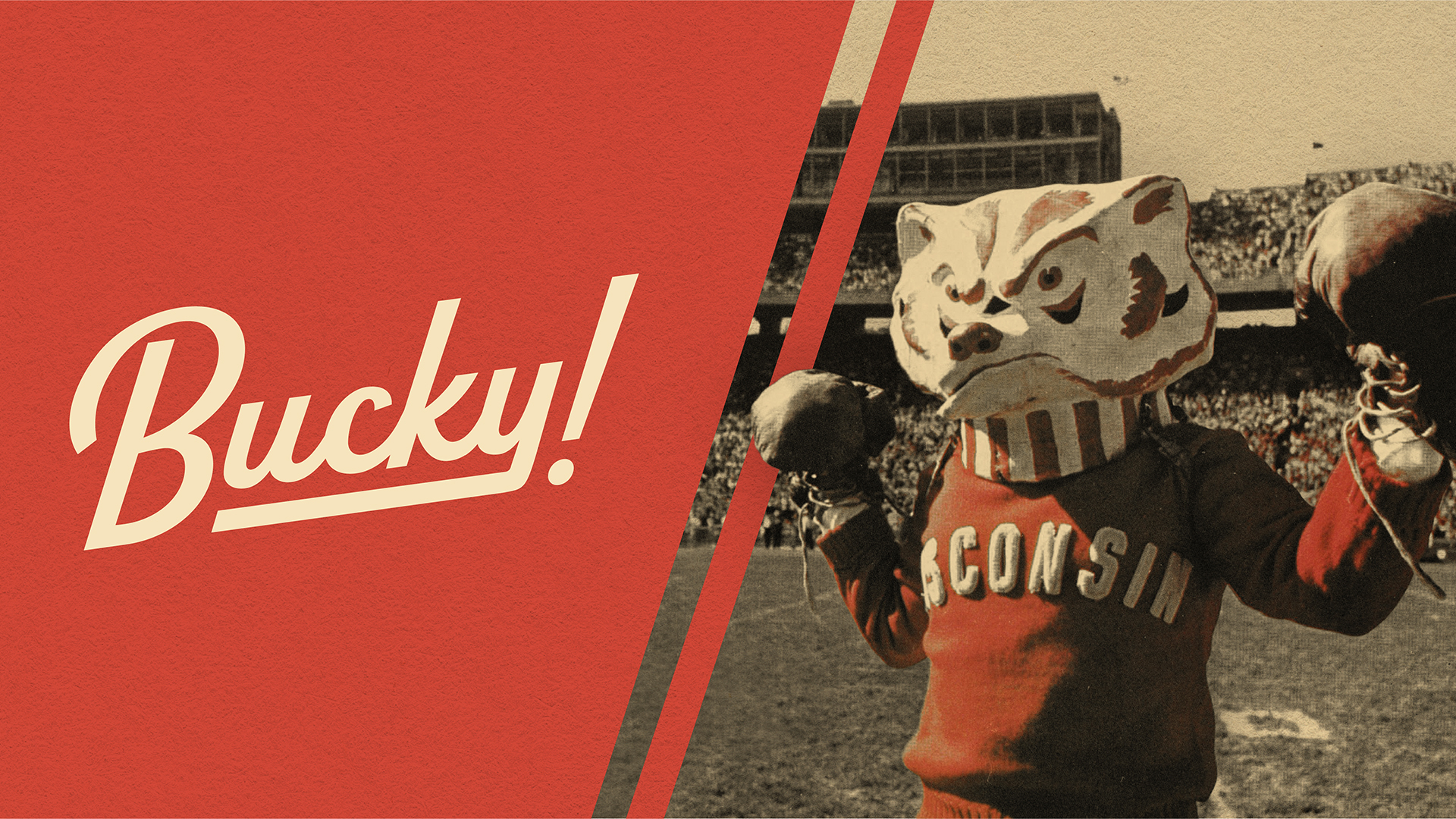





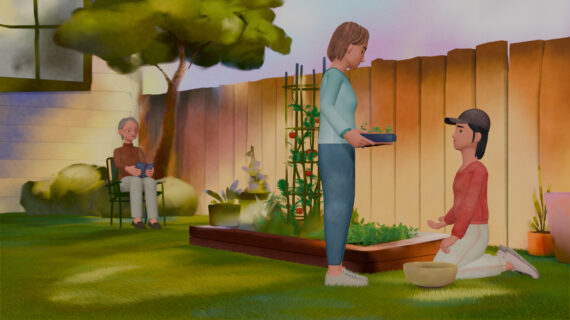
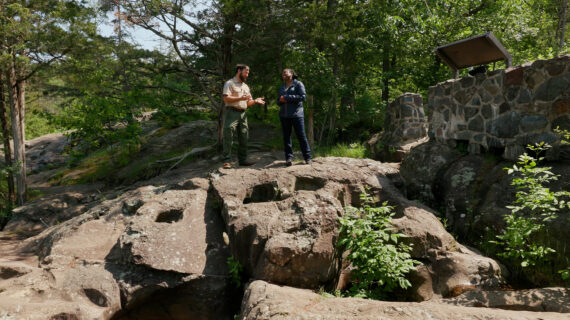
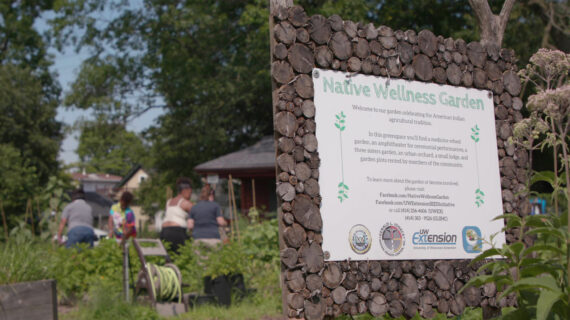

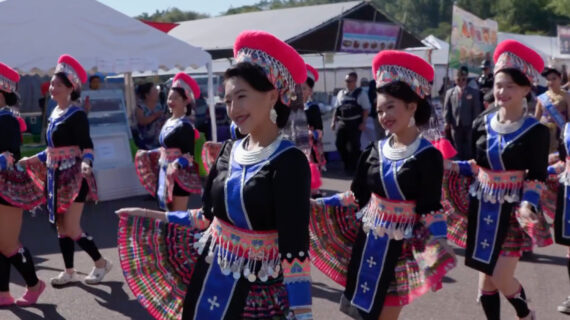
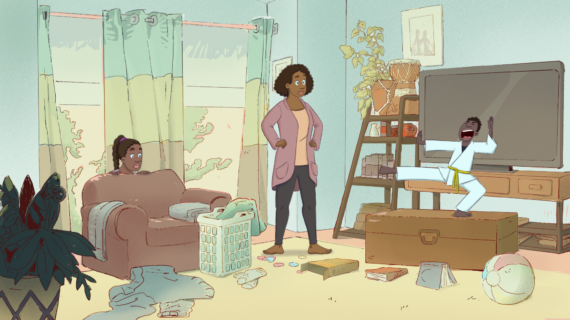
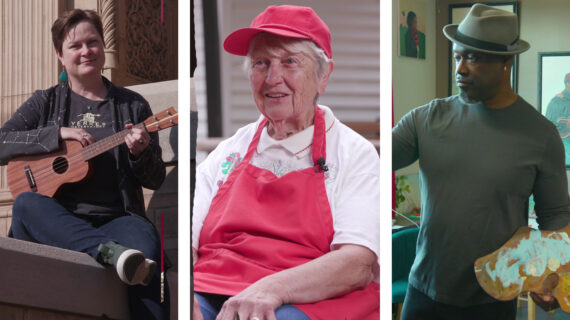
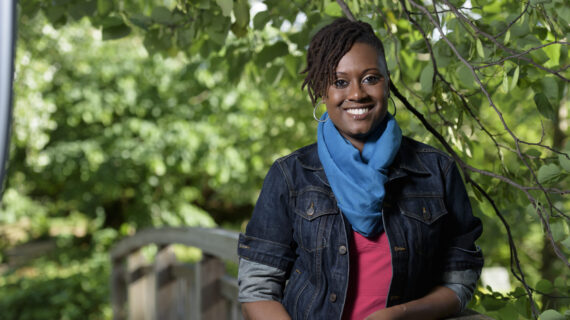



Follow Us